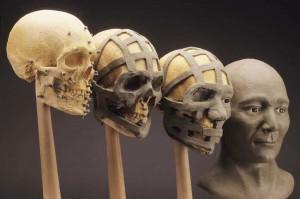3D printing is now proving extremely useful in the field of forensic facial reconstruction, a method of identifying skeletal remains. The process consists of recreating the face of a person with only the skull as a reference. An artist schooled in anatomy, anthropology, osteology (the study of the functio
This practice is used in situations where human remains are found in order to attempt to identify the person and to determine whether a crime has been committed. It is also used by anthropologists and archaeologists when remains of ancient humans and homonids are discovered.
A major problem with the current practice of forensic facial reconstruction is that the skull must be used and can, in the process, potentially be damaged. Even
EMS assisted the Hillsborough County (Florida) Coroner’s Office in the identification of a person whose remains had been discovered. They used a Z Scanner Z800 (manufactured by Z Corp) to create a 3D scan of the skull. The scan was given to SensAble Technologies (now part of Geomagic), which has a feature called “Clay Tools,” that enables technicians to imitate the real-life building up of clay on the surface of the skull that happens with traditional forensic facial reconstruction. The program has a feature that creates virtual tissue depth markers, allowing the 3D artist to reconstruct features on the scanned skull layer by layer.
Once the reconstruction process if completed, EMS produced a full color 3D print of the artist’s rendering using a Z650 3D printer, also made by Z Corp. The printer allows for a lifesize replica to be produced, a model that can be retained for evidence or display, depending upon the circumstances. Significantly, with forensic facial reconstruction, it is standard practice to have several artists create reconstructions, particularly focusing on facial features, which are considered to be difficult to discern solely from the shape of skull and layers of tissue. This is why the results of forensic facial reconstruction are not considered admissable in court as evidence, because the facial features are truly subject to interpretation. Regardless, the obvious applicability of 3D technology in this field is an exciting step forward. Let’s hear your thoughts on this new approach in the 3D Printed Forensics forum thread on 3DPB.com.